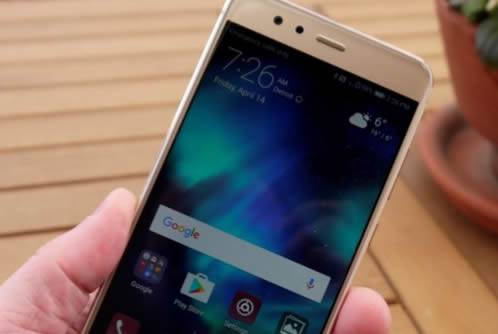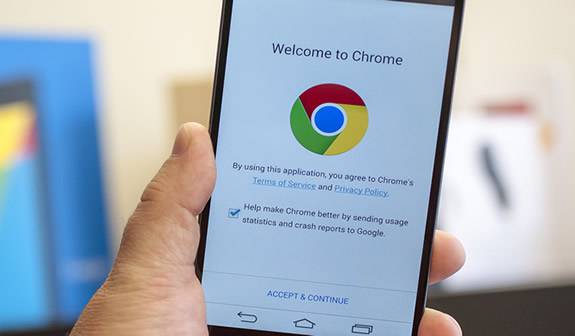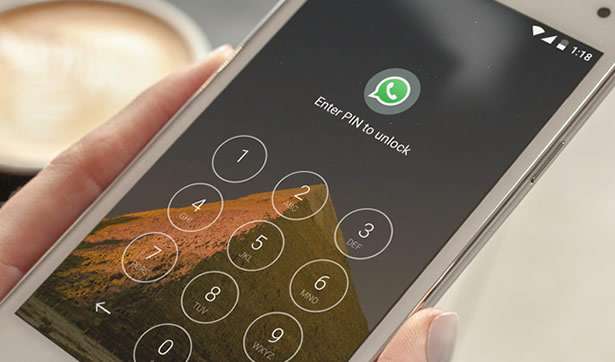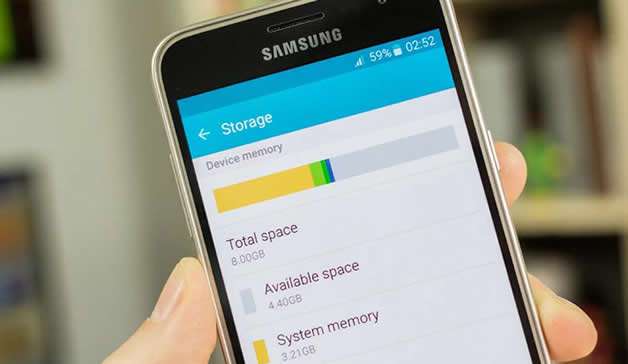There could be a few reasons why your iPhone is sending iMessages to an Android phone.
1. The recipient of your iMessage may have switched from an iPhone to an Android device, and their phone number is still registered with Apple’s iMessage service. This means that when you try to send them a message, your iPhone sends it as an iMessage instead of an SMS.
2. Your iPhone could be experiencing a software glitch. Try restarting your device or toggling the iMessage feature on and off in your device’s settings.
3. Your iPhone may not be able to determine the recipient’s phone number carrier, and as a result, it sends the message as an iMessage by default. You can try deleting the phone number from your contacts and re-adding it again, ensuring that you select the correct type of phone number (mobile, work, home, etc.).
If none of these solutions work, you may want to contact Apple support for further assistance.
How do I stop my iPhone from sending iMessages to my Android?
Why are my messages sending blue to an Android?
When your messages are sending blue to an Android phone, it typically means that the messages are being sent using Apple’s iMessage service instead of traditional SMS/MMS messaging. iMessage is a messaging service exclusive to Apple devices that allows users to send text messages, photos, videos, and more over an internet connection. When sending a message to an Android device, iMessage may default to sending the message through the internet and using a blue chat bubble instead of traditional SMS messaging and the green chat bubble. This can cause issues with message delivery as Android devices do not support iMessage. To ensure that your messages are being sent through traditional SMS/MMS on your iPhone, you can toggle off iMessage in your iPhone settings.
Why is my iPhone not delivering messages to Android?
There are several reasons why your iPhone may not be delivering messages to Android devices.
Firstly, it is possible that there is a temporary network outage or disruption that is preventing messages from being sent and delivered. In this case, you can try turning off Wi-Fi or cellular data, waiting for a few seconds, and then turning it back on.
Secondly, it could be a problem with the settings on your iPhone. You should check to make sure that your iMessage and SMS settings are properly configured, and that your iPhone is set to send messages as SMS when iMessage is not available.
Thirdly, it is possible that the issue is with the recipient’s Android device. Android devices use a variety of messaging apps, some of which may not be compatible with iMessage. In this case, the recipient may need to switch to a different messaging app or make sure that they have the latest version of their current messaging app installed.
Additionally, the recipient may have blocked your number, or their phone number may have been blocked on your iPhone. You can check this by going to your iPhone’s Settings app, selecting Messages, and then Blocked.
Lastly, it could be a compatibility issue between the different operating systems. iOS and Android can sometimes have difficulty communicating with each other, leading to issues with message delivery. In this case, the best solution may be to switch to a messaging app that is cross-platform and compatible with both iOS and Android devices.
Why won’t my iPhone send messages to non iPhones?
There could be a few reasons why an iPhone is unable to send messages to non-iPhones. One possible reason is that the user may not have enabled the option to send SMS messages in their iPhone’s settings. Another reason could be that the recipient’s phone number or contact information is not entered correctly. It is also possible that the user’s cellular plan does not include the ability to send SMS messages to non-iPhones. In some cases, there may be network or compatibility issues that prevent the iPhone from sending messages to non-iPhones. It is recommended to review the device settings, ensure the contact information is correct, and contact the cellular provider for assistance if the issue persists.
Why is my iPhone sending my iMessages as text messages?
Your iPhone may be sending iMessages as text messages due to a variety of reasons.
One possible reason is that the recipient’s device is not able to receive iMessages. iMessages require an internet connection, and if the recipient’s device is not connected to the internet, the iMessage will be sent as a text message instead.
Another possible reason is that there may be an issue with your iPhone’s settings. It’s possible that your iMessage feature is turned off, or that there is a problem with your Apple ID or cellular data settings, which can prevent iMessages from being sent.
To troubleshoot this issue, you can try the following steps:
1. Check if iMessage is turned on in your iPhone’s settings. Go to Settings > Messages and make sure the switch next to iMessage is turned on.
2. Check your Apple ID and cellular data settings. Go to Settings > Messages > Send & Receive and check if your Apple ID is listed and if you have the correct phone number or email address selected for iMessage. Also, make sure Cellular Data is turned on for Messages.
3. Check if the recipient’s device is able to receive iMessages. Ask the recipient if they are able to receive iMessages and if they have any internet connectivity issues.
4. Restart your iPhone. Sometimes simply restarting your device can resolve connectivity issues.
If none of these steps resolve the issue, it’s best to contact Apple support for further assistance.
Does iMessage send texts to Android?
No, iMessage is an Apple proprietary messaging platform that only works with Apple devices running iOS. iMessage uses Apple’s servers to send messages through the internet instead of traditional cellular networks, making it faster and more reliable than SMS/MMS messaging. When attempting to send an iMessage to an Android device, the message will typically fail and revert to a standard SMS text message, which is compatible with Android devices.
Why is my text blue instead of green?
There could be different reasons why your text is appearing blue instead of green, ranging from the settings in your device or application to the properties of the document or web page you are working on. It is important to identify the context of your question to provide a more specific answer. Some possible explanations include:
– If you are using a word processor, text editor, or email client, the color of your text may be determined by the default settings or the selection you made in the font or color toolbar. Check if there is an option to change the color or if you accidentally clicked on the wrong color.
– If you are working on a web page or forum, the color of your text may be influenced by the style sheet (CSS) that defines the visual properties of the page. Check if the CSS has a rule that sets the color of text or if there is an inline style or attribute that overrides it.
– If you are collaborating on a shared document or file, the color of your text may appear differently depending on the software or program used by other contributors. Check if there are any compatibility issues or whether the document has been saved in a different format.
– If you are using an assistive technology such as a screen reader or text-to-speech software, the color of your text may not be relevant or visible. Check if there are other ways to distinguish your text or if you need to adjust the accessibility settings.
In general, the color of your text can vary depending on the context, and it is important to understand the underlying factors that affect its appearance. If you are unsure or cannot resolve the issue, you may seek help from a technical support service or consult relevant documentation or forums.
Why is my message blue instead of green Android?
The color of your message in Android depends on the messaging app you are using and the type of message you are sending. By default, Android devices use blue color for messages sent through its built-in messaging app, which is called Android Messages. These blue colored messages represent standard SMS or MMS text messages that are sent through your mobile carrier’s network. On the other hand, green colored messages are sent through internet services like WhatsApp, Facebook messenger or any other internet messaging app. These are known as internet-based or data-based messages. If you are using a third-party messaging app on your Android device, you may have the option to customize the color of your messages according to your preferences.
{“@context”:”https://schema.org”,”@type”:”FAQPage”,”mainEntity”:[{“@type”:”Question”,”name”:”Why are my messages sending blue to an Android?”,”acceptedAnswer”:{“@type”:”Answer”,”text”:”When your messages are sending blue to an Android phone, it typically means that the messages are being sent using Apple’s iMessage service instead of traditional SMS/MMS messaging. iMessage is a messaging service exclusive to Apple devices that allows users to send text messages, photos, videos, and more over an internet connection. When sending a message to an Android device, iMessage may default to sending the message through the internet and using a blue chat bubble instead of traditional SMS messaging and the green chat bubble. This can cause issues with message delivery as Android devices do not support iMessage. To ensure that your messages are being sent through traditional SMS/MMS on your iPhone, you can toggle off iMessage in your iPhone settings.”}},{“@type”:”Question”,”name”:”Why is my iPhone not delivering messages to Android?”,”acceptedAnswer”:{“@type”:”Answer”,”text”:”There are several reasons why your iPhone may not be delivering messages to Android devices. nnFirstly, it is possible that there is a temporary network outage or disruption that is preventing messages from being sent and delivered. In this case, you can try turning off Wi-Fi or cellular data, waiting for a few seconds, and then turning it back on. nnSecondly, it could be a problem with the settings on your iPhone. You should check to make sure that your iMessage and SMS settings are properly configured, and that your iPhone is set to send messages as SMS when iMessage is not available. nnThirdly, it is possible that the issue is with the recipient’s Android device. Android devices use a variety of messaging apps, some of which may not be compatible with iMessage. In this case, the recipient may need to switch to a different messaging app or make sure that they have the latest version of their current messaging app installed. nnAdditionally, the recipient may have blocked your number, or their phone number may have been blocked on your iPhone. You can check this by going to your iPhone’s Settings app, selecting Messages, and then Blocked. nnLastly, it could be a compatibility issue between the different operating systems. iOS and Android can sometimes have difficulty communicating with each other, leading to issues with message delivery. In this case, the best solution may be to switch to a messaging app that is cross-platform and compatible with both iOS and Android devices.”}},{“@type”:”Question”,”name”:”Why won’t my iPhone send messages to non iPhones?”,”acceptedAnswer”:{“@type”:”Answer”,”text”:”There could be a few reasons why an iPhone is unable to send messages to non-iPhones. One possible reason is that the user may not have enabled the option to send SMS messages in their iPhone’s settings. Another reason could be that the recipient’s phone number or contact information is not entered correctly. It is also possible that the user’s cellular plan does not include the ability to send SMS messages to non-iPhones. In some cases, there may be network or compatibility issues that prevent the iPhone from sending messages to non-iPhones. It is recommended to review the device settings, ensure the contact information is correct, and contact the cellular provider for assistance if the issue persists.”}},{“@type”:”Question”,”name”:”Why is my iPhone sending my iMessages as text messages?”,”acceptedAnswer”:{“@type”:”Answer”,”text”:”Your iPhone may be sending iMessages as text messages due to a variety of reasons. nnOne possible reason is that the recipient’s device is not able to receive iMessages. iMessages require an internet connection, and if the recipient’s device is not connected to the internet, the iMessage will be sent as a text message instead.nnAnother possible reason is that there may be an issue with your iPhone’s settings. It’s possible that your iMessage feature is turned off, or that there is a problem with your Apple ID or cellular data settings, which can prevent iMessages from being sent.nnTo troubleshoot this issue, you can try the following steps:nn1. Check if iMessage is turned on in your iPhone’s settings. Go to Settings > Messages and make sure the switch next to iMessage is turned on.n2. Check your Apple ID and cellular data settings. Go to Settings > Messages > Send & Receive and check if your Apple ID is listed and if you have the correct phone number or email address selected for iMessage. Also, make sure Cellular Data is turned on for Messages.n3. Check if the recipient’s device is able to receive iMessages. Ask the recipient if they are able to receive iMessages and if they have any internet connectivity issues.n4. Restart your iPhone. Sometimes simply restarting your device can resolve connectivity issues.nnIf none of these steps resolve the issue, it’s best to contact Apple support for further assistance.”}},{“@type”:”Question”,”name”:”Does iMessage send texts to Android?”,”acceptedAnswer”:{“@type”:”Answer”,”text”:”No, iMessage is an Apple proprietary messaging platform that only works with Apple devices running iOS. iMessage uses Apple’s servers to send messages through the internet instead of traditional cellular networks, making it faster and more reliable than SMS/MMS messaging. When attempting to send an iMessage to an Android device, the message will typically fail and revert to a standard SMS text message, which is compatible with Android devices.”}},{“@type”:”Question”,”name”:”Why is my text blue instead of green?”,”acceptedAnswer”:{“@type”:”Answer”,”text”:”There could be different reasons why your text is appearing blue instead of green, ranging from the settings in your device or application to the properties of the document or web page you are working on. It is important to identify the context of your question to provide a more specific answer. Some possible explanations include:nn- If you are using a word processor, text editor, or email client, the color of your text may be determined by the default settings or the selection you made in the font or color toolbar. Check if there is an option to change the color or if you accidentally clicked on the wrong color.n- If you are working on a web page or forum, the color of your text may be influenced by the style sheet (CSS) that defines the visual properties of the page. Check if the CSS has a rule that sets the color of text or if there is an inline style or attribute that overrides it.n- If you are collaborating on a shared document or file, the color of your text may appear differently depending on the software or program used by other contributors. Check if there are any compatibility issues or whether the document has been saved in a different format.n- If you are using an assistive technology such as a screen reader or text-to-speech software, the color of your text may not be relevant or visible. Check if there are other ways to distinguish your text or if you need to adjust the accessibility settings.nnIn general, the color of your text can vary depending on the context, and it is important to understand the underlying factors that affect its appearance. If you are unsure or cannot resolve the issue, you may seek help from a technical support service or consult relevant documentation or forums.”}},{“@type”:”Question”,”name”:”Why is my message blue instead of green Android?”,”acceptedAnswer”:{“@type”:”Answer”,”text”:”The color of your message in Android depends on the messaging app you are using and the type of message you are sending. By default, Android devices use blue color for messages sent through its built-in messaging app, which is called Android Messages. These blue colored messages represent standard SMS or MMS text messages that are sent through your mobile carrier’s network. On the other hand, green colored messages are sent through internet services like WhatsApp, Facebook messenger or any other internet messaging app. These are known as internet-based or data-based messages. If you are using a third-party messaging app on your Android device, you may have the option to customize the color of your messages according to your preferences.”}}]}







